24. Apr. 2025
Photo: Václav Koníček
For the sixteenth time, the City of Brno has recognised promising young scientists from local universities. At a ceremonial event held at the New Town Hall, they were presented with cheques to support the further development of their research. Among the 25 awardees were seven PhD students based at CEITEC, who will use the scholarship to support research in areas such as electron microscopy, nanobiotechnology, or the development of plasmonics.
Every autumn, first-year PhD students from four Brno universities can apply for the competition. This year, 120 applications were submitted for the Brno PhD Talent programme. A panel of experts selected 50 finalists based on their presentations. After a further round of evaluation, only the 25 best candidates remained. Among them are three researchers from CEITEC Brno University of Technology (BUT) and four from CEITEC Masaryk University (MUNI). Their home institutions can take pride in the total of 25 awardees – Masaryk University boasts 17 (including four students conducting research under the guidance of CEITEC MUNI scientists), and Brno University of Technology has eight (including three based at CEITEC BUT). Behind the successful proposals are ten women and fifteen men from five countries, who will receive a total of CZK 9 million in scholarships from the City of Brno. Each awardee will receive CZK 360,000 over a period of three years.
“Research and innovation development is part of Brno’s strategic priorities, which is why the city invests CZK 100 million in science and research, viewing it as an investment in the future. The Brno PhD Talent Award is one of the ways we aim to make Brno a national leader in research,” said Anna Putnová, Councillor for Innovation and Research Organisation Cooperation, during the ceremony. The impact of the scholarship is clearly reflected in the students' own words. “The scholarship gives me the freedom to fully focus on science without worrying about my finances or having to find another job. It also serves as a form of recognition and reassures me that my research has potential and is worth pursuing,” said Tereza Havlíková from CEITEC BUT, one of this year’s recipients.
The scholarship will enable recipients to remain active in science. Some will use it to fund internships or training; others plan to purchase materials and equipment. For some, it simply alleviates financial pressure, allowing them to concentrate on what they’re truly passionate about. “I enjoy discovering previously unexplored aspects of life using cutting-edge technologies. Tackling unexpected challenges that arise during the research process is always an exciting part of the journey,” says Jakub Hruška from CEITEC MUNI, who is among this year’s top 25 awardees.
Introducing this year’s CEITEC scholarship recipients
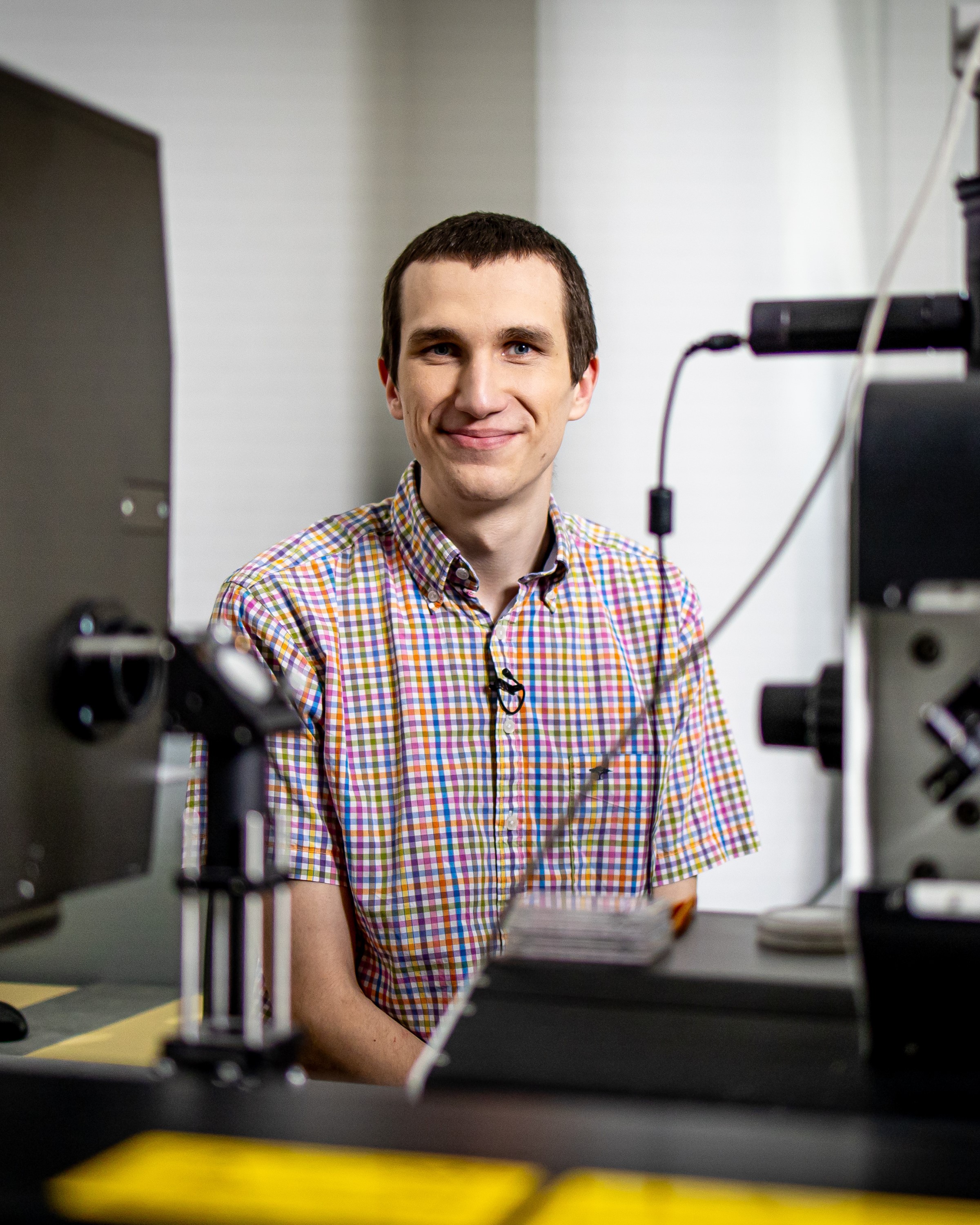 MICHAEL FOLTÝN, CEITEC BUT
MICHAEL FOLTÝN, CEITEC BUT
Michael Foltýn focuses on the field of plasmonics in non-precious metals, which investigates the behaviour of electrons on metal surfaces when exposed to electromagnetic radiation. Gold or silver nanoparticles are typically used for such research, but they are costly and limited mostly to the infrared and visible light spectrum. Therefore, Michael is looking for cheaper materials suitable for plasmonic applications in the UV spectrum – for example, to reduce the cost of medical tests based on gold nanoparticles.
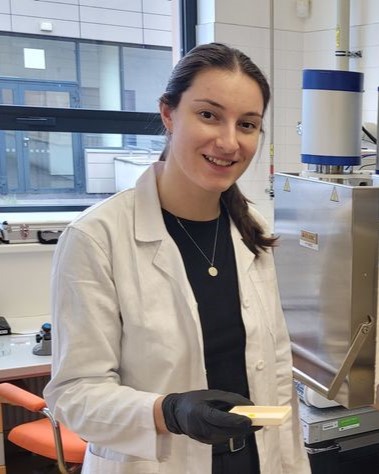 TEREZA HAVLÍKOVÁ, CEITEC BUT
TEREZA HAVLÍKOVÁ, CEITEC BUT
Tereza Havlíková works in the Advanced Multifunctional Ceramics research group at CEITEC BUT. Her project involves developing a new type of transparent ceramic material for advanced applications in optics and photonics, such as lasers and imaging technology detectors. She focuses on so-called high-entropy materials, where combining multiple elements within a single crystal structure can result in excellent properties and greater functionality. Her goal is to achieve high transparency and enhanced photoluminescent properties.
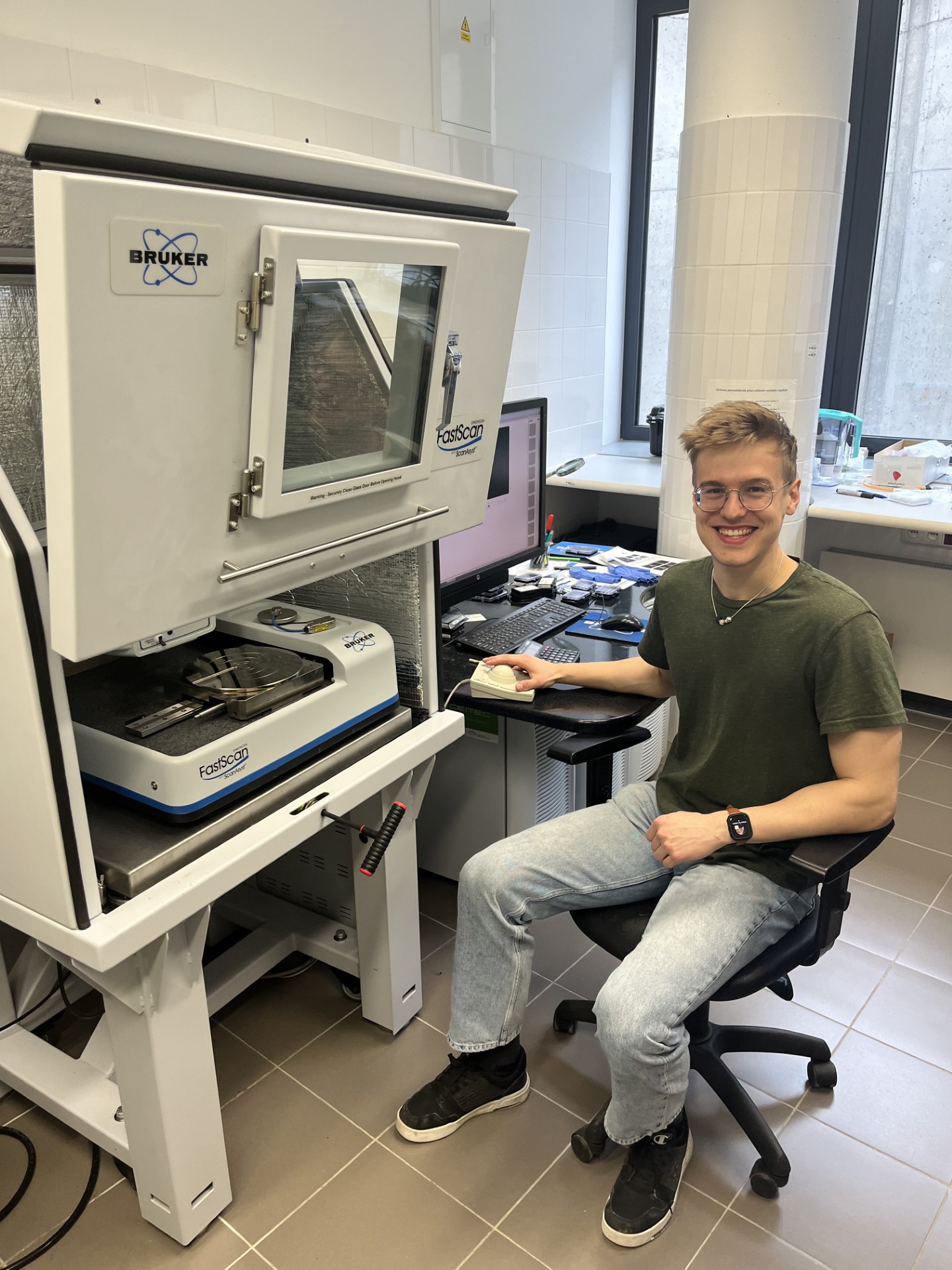 JAKUB HRUŠKA, CEITEC MUNI
JAKUB HRUŠKA, CEITEC MUNI
Jakub Hruška’s project, based in the Nanobiotechnology Core Facility at CEITEC MUNI, aims to better understand how living cells interact with micro- and nanoparticles (NPs) without the need for labelling. These interactions will be studied using in-situ correlative probe and electron microscopy (CPEM) in an environmental scanning electron microscope (ESEM) chamber, enabling live imaging of unfixed cells. When possible, a microfluidic device will be used to deliver NPs to the cells in situ, without removing the sample from the microscope chamber.
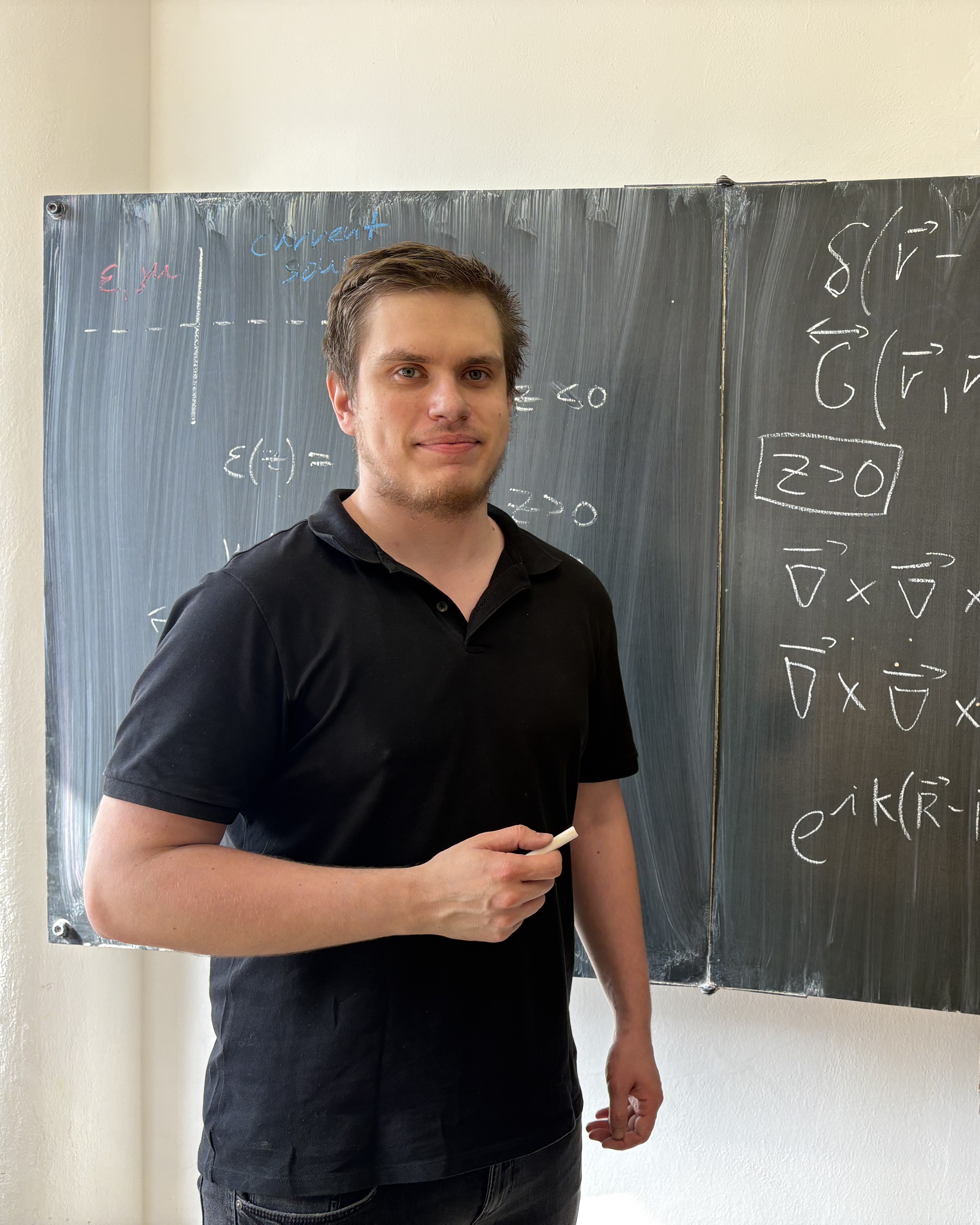 JIŘÍ KABÁT, CEITEC BUT
JIŘÍ KABÁT, CEITEC BUT
The heating of electronic components in state-of-the-art electron microscopes can influence their function – both positively and negatively. Jiří Kabát from the Nanostructure Preparation and Characterisation research group at CEITEC BUT is interested in this phenomenon. He theoretically investigates the interaction between moving electrons and heated materials to understand and potentially utilise or mitigate the resulting thermal effects. “What I find most fulfilling is when elegant theoretical equations and computer simulations align with experimental results and help explain physical phenomena,” he remarks.
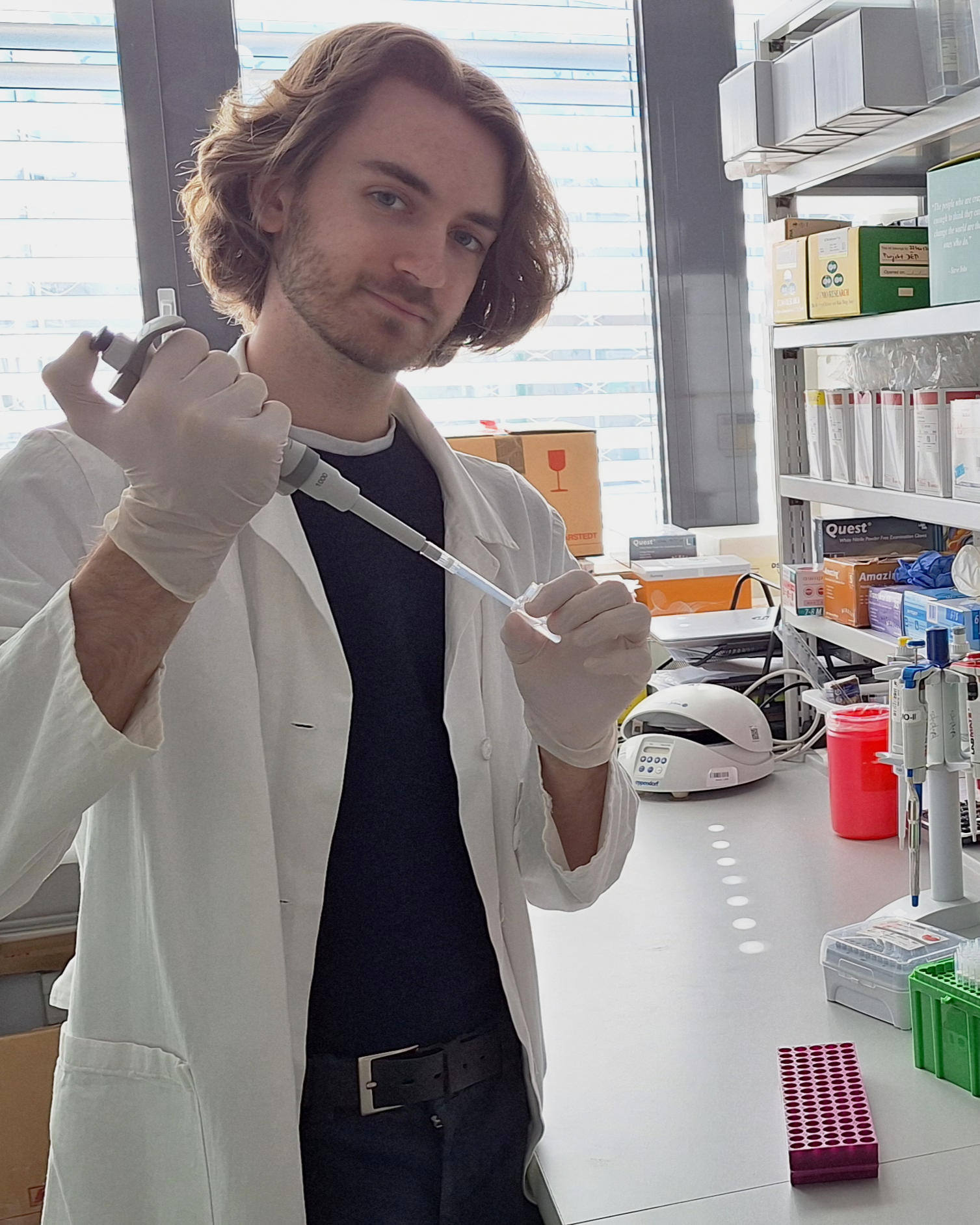 VIKTOR KOSTOHRYZ, CEITEC MUNI
VIKTOR KOSTOHRYZ, CEITEC MUNI
Viktor Kostohryz, a member of the Molecular Oncology – Solid Cancer group at CEITEC MUNI, is working on a safer form of CAR-T cell therapy using non-viral vectors. CAR-T therapy is a recent breakthrough in oncology that enables effective treatment of leukaemia by genetically modifying cells to target and destroy cancer cells. However, rare cases of secondary leukaemia derived from CAR-T cells themselves have limited the therapy’s broader application. Viktor and his colleagues aim to develop CAR-T cells more safely using non-viral episomal vectors.
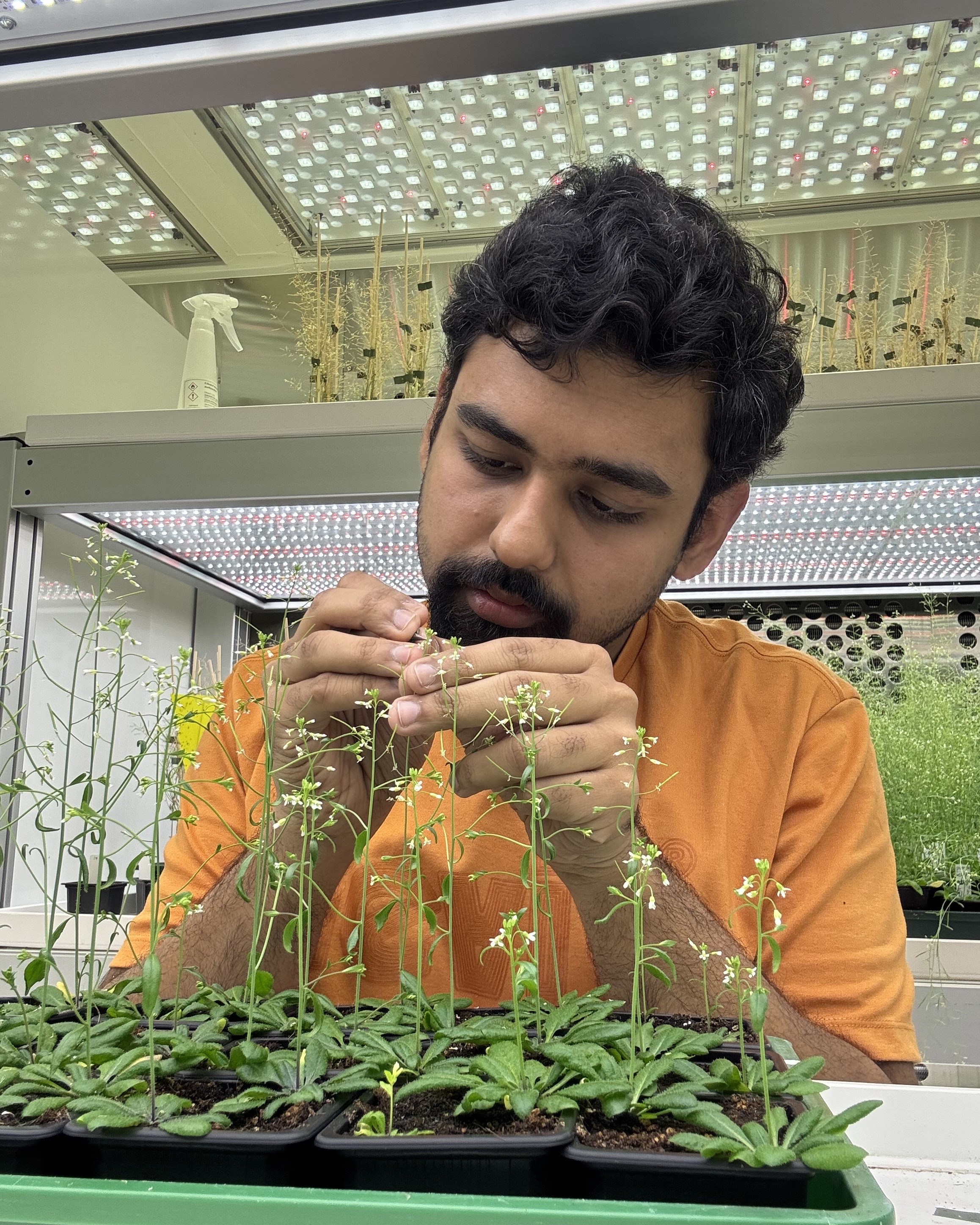 MILINDA LAHIRI, CEITEC MUNI
MILINDA LAHIRI, CEITEC MUNI
In the context of climate change and the challenges it poses, Milinda Lahiri’s project focuses on plant stress responses to heat exposure and how this knowledge could be used to breed more resilient crops. “My project looks at how stress granules regulate plant responses to abiotic stress. I aim to apply this knowledge to rice – a staple for over 51% of the world’s population. This way, I hope to contribute to sustainable societal development,” says Milinda, who is based in the Plant Molecular Biology group at CEITEC MUNI.
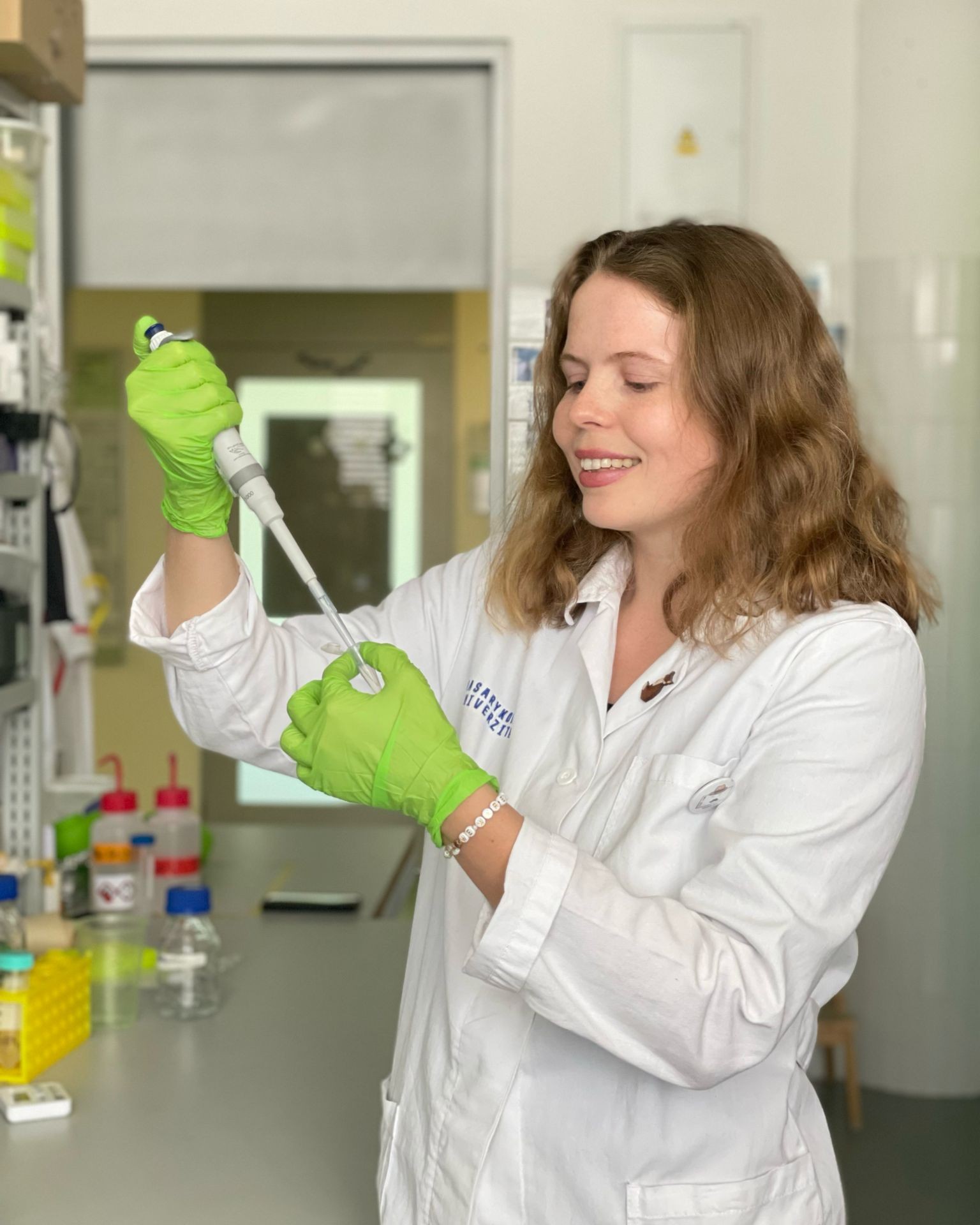 PETRA PAVELKOVÁ, CEITEC MUNI
PETRA PAVELKOVÁ, CEITEC MUNI
Petra Pavelková is part of the Microenvironment of Immune Cells group, where she studies the transcription factor FoxO1 and its role in the pathogenesis of chronic lymphocytic leukaemia (CLL). Her research explores how FoxO1 affects the B-cell receptor (BCR) signalling pathway, potentially enabling CLL cells to adapt to therapy. She also investigates how inhibiting FoxO1 influences CLL cell survival and whether this approach could offer new options for combination targeted therapy.


 Share
Share
